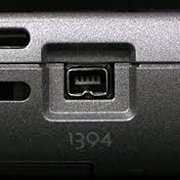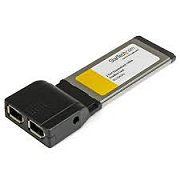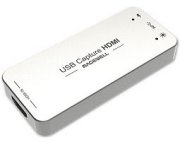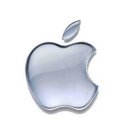Hardware requirements
If you want to do video analysis, it is important to understand that working with video places a pretty big demand on your system resources. Much more than for example browsing or sending emails. To make sure your setup can do video analysis smoothly, you should take some time to learn about hardware and software requirements. Read more on this page.
Laptop requirements
The software is developed for Windows 10, but it should run fine on other versions of Windows. NatriSoft software does not add any requirements, so the minimal system requirements are equal to the system requirements for MicroSoft Windows. But there are two things you need to look at before buying a laptop to use for video analysis. First of all, you need to check whether it's powerful enough, secondly you should also check what kind of connector it has onboard.
Working with video files (especially large video files) requires a lot from a laptop. So we recommend using a 'better-than-average' laptop for a good user-experience. Choose a laptop with a good processor (for example Intel Core i5) and some extra RAM (for example 16 GB). Nowadays, most computers have a SSD (Solid State Disk) installed instead of a 'normal' HDD (Hard Disk Drive). The capacity is up to you, it depends on how many hours of video you want to capture in a day. But for recording and backups you will need internal and external disks with large capacities.
The connections that the computer has are also important. A few years ago it was important that a computer had a firewire connection, because this was the best way to record (live) video. Today that standard has been overtaken by faster USB connections. In order to record video in a high resolution and/or a high frame rate, the computer needs a USB 3 connection (which is faster than USB 1 and USB 2). More information below.
Version 3 software and firewireSportsWatch and SwimWatch version 3 software is designed for recording and playing video with SD resolution (720 x 576 pixels) and a framerate of 25 fps (frames per second). The software saves video in AVI containers (uncompressed) and can export to WMV format (compressed). The most used connection for version 3 software is the Firewire connection. In the past, firewire connectors could be found on most cameras and most laptops. Do you have a camera and laptop with firewire connector, you can connect them with a single cable, with a 4-pin connector at either side (the small type). Easy! Unfortunately, nowadays most laptops do not have a firewire connector anymore. For those that want to continue using version 3 software, a firewire card may be a solution. You can slide one in your laptop (provided it has a card slot). Then, you can connect your firewire camera to that card and you have a firewire connection. Obviously, your camera needs to have a firewire connector for this to work. Just as firewire connectors are rare in laptops, they are very rare on digitale cmeras as well. For that reason it is probably better to switch to using USB ports. Read more below. |


|
Version 4 software and USB
Nowadays, HD video is so common that it will no longer be an option to work with video in SD video. As said, HD resolution is not guaranteed in version 3, but a new version is being worked on: version 4. With this version it is possible to work in HD resolution (1920 x 1080 pixels) and with 50 frames per second. However, the maximum number of frames per second and the maximum achievable resolution depends on the type of connection that is used between camera and laptop.
- USB 1.1 = 12 Mbit/s
- Firefire 400 = 400 Mbit/s
- USB 2.0 = 480 Mbit/s
- FireWire 800 = 800 Mbit/s
- USB 3.0 = 5 Gbit/s
- USB 3.1 = 10 Gbit/s
The maximum number of frames per second that you can achieve with your camera and laptop, depends on the speed (capacity) of the connection. For a firewire 400 connection, an SD resolution and 25 frames per second can be captured comfortably. But at a resolution of 1280 x 720, a single frame gives so much more data that you will not be able to capture 25 frames per second. The amount of frames per second will not exceed 19 frames per second (at a resolution of 1920 x 1080 the maximum can't exceed 8 frames per second).
The speed of a USB 2.0 connection is not significantly faster than a firewire connection. To be able to record higher resolutions and a higher number of images per second, you really need a USB 3.0 connection. It is therefore essential to check whether the USB connectors on your laptop are USB 2.0 or USB 3.0 connections. Beware: some laptops have both USB 2.0 and USB 3.0 connections, so check all the ports on your computer!
A webcam or action camera is often supplied with a USB cable. If the camera in question can record in HD resolution, it is not yet certain whether the camera can give live images via USB. Also it is not certain whether these live images are transmitted in the same high resolution. It is possible that this high resolution can only be achieved when the images are stored on an SD card, while the USB connection is intended for data transfer only (copying the images previously recorded on the SD card). So make sure to test whether a specific camera and specific laptop can provide you with live image in HD resolution!
|
The rule that a USB connection is mainly aimed at copying previously made video recordings, usually also applies to digital video cameras. However, these days videocameras almost always have an HDMI output. The purpose of that connector is to enable showing live video images on a screen, for example on a large television screen. So it would be logical if you could use an HDMI cable between your camera and your laptop. The HDMI connection that many laptops have (not all of them though), is not an HDMI input, but also an output (so images from the laptop can be shown on a large television). Fortunately, there are HDMI to USB interfaces that can be used to show live image from a video camera on a laptop. A good example is the "Magewell USB Capture HDMI Gen 2" interface. You connect the video camera to the interface with an HDMI cable and then use a USB cable to connect the interface to your laptop. With such a setup you can make good live recordings from a digital video camera to your laptop. But to record in high resolutions or speeds, a USB 3 port is still required. Also, you might need to adjust capture settings for the interface through a setup program provided by the manufacturer. Sometimes it is difficult to tell if a port is USB 2 or USB 3. Usually USB 3 connectors and cables are output in the color blue. |
|

|
Apple computersThe software is not designed for Apple systems, but some customers are using our software on Apple computers using the bootcamp method or the Parallel desktop method (both is possible). Search for more information on the internet or go to www.apple.com. If you are an experienced Apple user and you would like to help other Apple users, you are welcome to share your experiences by sending an email to support@natrisoft.nl. The fact that we currently do not have software for Apple in our productline, does not mean that we will never develop software for Apple. We are open for suggestions and the possibility to create new versions of our software (especially the Viewer software) for other platforms. If you are a developer and you would like to contribute, you can send an email to development@natrisoft.nl. |
|

|


